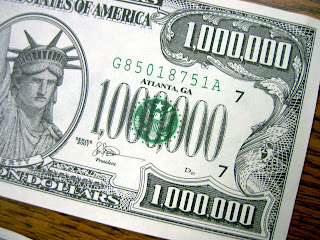The Supreme Court upheld President Obama’s healthcare reform legislation Thursday morning, but there’s no need to overreact.
By Diana Britton
The U.S. Supreme Court upheld the constitutionality of President Obama’s healthcare reform legislation Thursday morning. That means a proposed tax increase on investment income is set to kick in, barring further Congressional changes to the tax code. But nothing takes effect until next year and investors shouldn’t make any rash decisions about their portfolios, according to tax experts.
“There’s no need to overreact right away today,” said Tim Steffen, director of financial planning at Robert W. Baird & Co. “Take a deep breath, and figure out what this really means for you before you start making long-term decisions.”
The new law imposes a Medicare tax of 3.8 percent on investment income for married couples with over $250,000 in combined income, or individuals with over $200,000 in income. That includes capital gains, interest, dividends, annuities, rental income and royalties. It also includes a 0.9 percent tax increase on wages for people in the same income levels.
“I am surprised that people are now saying, ‘Oh my gosh, taxes are going up.’”
In addition, Steffen believes two other pending tax changes could be more impactful, including the Bush tax cuts and the estate tax cuts, set to expire at the beginning of next year. The Bush tax cuts, for example, will impact everybody.
“As big a decision as this is and as impactful as this will be for investors, this is only one of three tax increases we’ve been keeping an eye on for next year,” Steffen said.
The 0.9 percent tax on wages is small compared to the tax boost on wages for the wealthy if the Bush tax cuts expire, which would increase from 35 percent to 40 percent, Friedman said.
Also, when making an investment portfolio decision, tax rates should definitely be a factor, but Steffen warns against making it the driving factor behind a decision. Advisors should base buys and sells on the merits of the underlying investments.
That said, the healthcare reform does mean a tax increase, like it or not, and there are some steps advisors can take to prepare for it. For one, if clients were planning to recognize capital gains or do stock options next year, they might want to consider doing those before the end of the year because it will be less expensive, Steffen said.
Andy Friedman, principal of The Washington Update, also saw this coming.
Investors should also be wary of dividend-paying stocks until we see how high dividend taxes will be, Friedman said. If lower dividend taxes expire as part of the Bush tax cuts, dividend taxes could go back up into the 40-percent range.
Friedman says investors shouldn’t have a knee-jerk reaction, however, to the news about the healthcare law, Friedman said.
“You should never make a fast decision on anything, except may a horse race,” Friedman said. “You don’t just sit down and fire off a sell order on everything you own. You sit down with your advisor and figure out what the best way to respond is.”
There’s always a possibility that the Obama healthcare reform could get repealed, but it would involve Congress going back and changing the law. That’s very unlikely, Steffen said.
By Angel Gonzales, Wall Street Journal
HOUSTON—America will halve its reliance on Middle East oil by the end of this decade and could end it completely by 2035 due to declining demand and the rapid growth of new petroleum sources in the Western Hemisphere, energy analysts now anticipate.
The shift, a result of technological advances that are unlocking new sources of oil in shale-rock formations, oil sands and deep beneath the ocean floor, carries profound consequences for the U.S. economy and energy security. A good portion of this surprising bounty comes from the widespread use of hydraulic fracturing, or fracking, a technique perfected during the last decade in U.S. fields previously deemed not worth tempering with.
By 2020, nearly half of the crude oil America consumes will be produced at home, while 82% will come from this side if the Atlantic, according to the U.S. Energy Information Administration. By 2035, oil shipments from the Middle East to North America "could almost be non-existent," the Organization of Petroleum Exporting Countries predicted, partly because more efficient car engines and a growing supply of renewable fuel will help curb demand.
The information contained in this article does not constitute a recommendation, solicitation, or offer by D2 Capital Management, LLC or its affiliates to buy or sell any securities, futures, options or other financial instruments or provide any investment advice or service. D2, its clients, and its employees may or may not own any of the securities (or their derivatives) mentioned in this article.














































